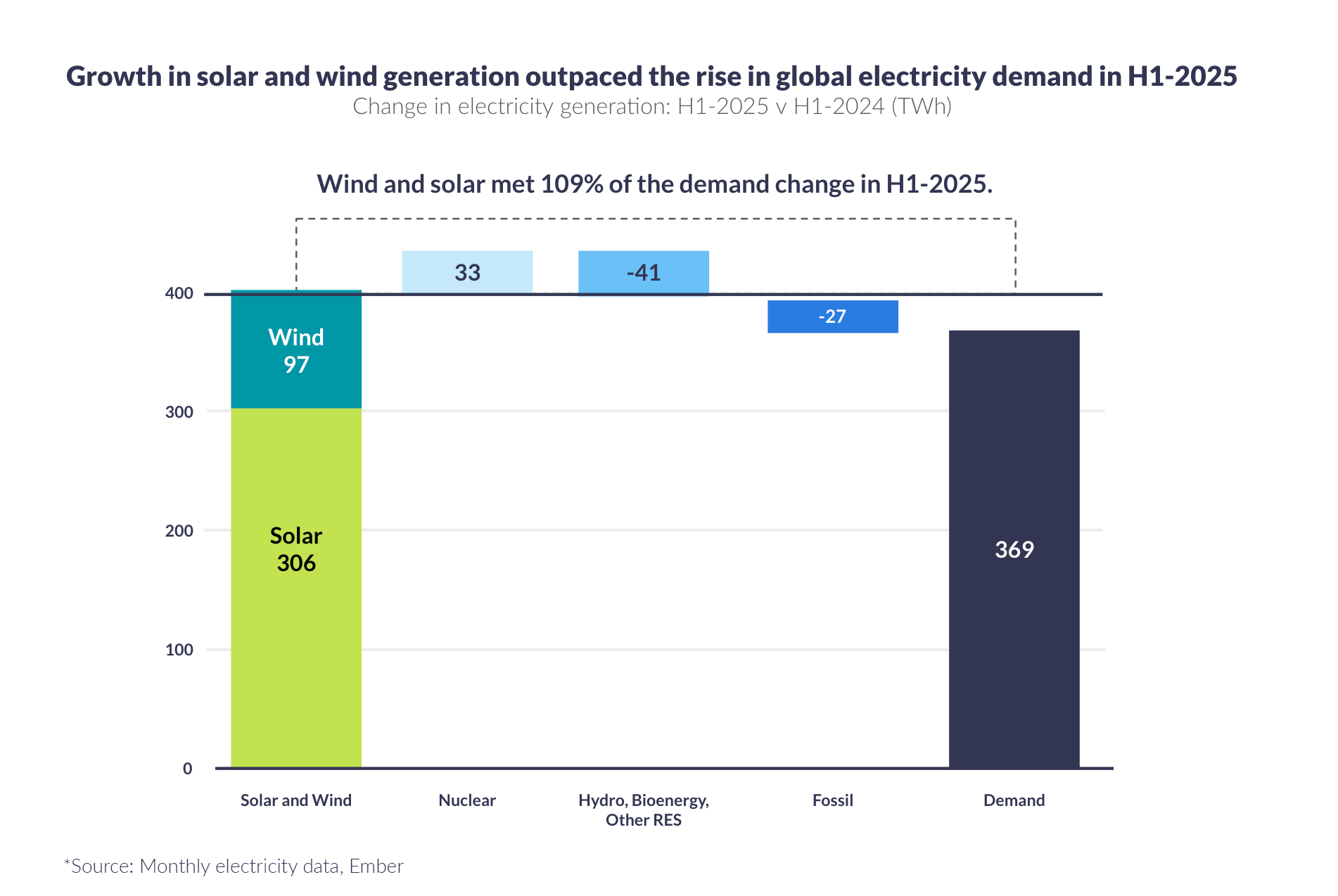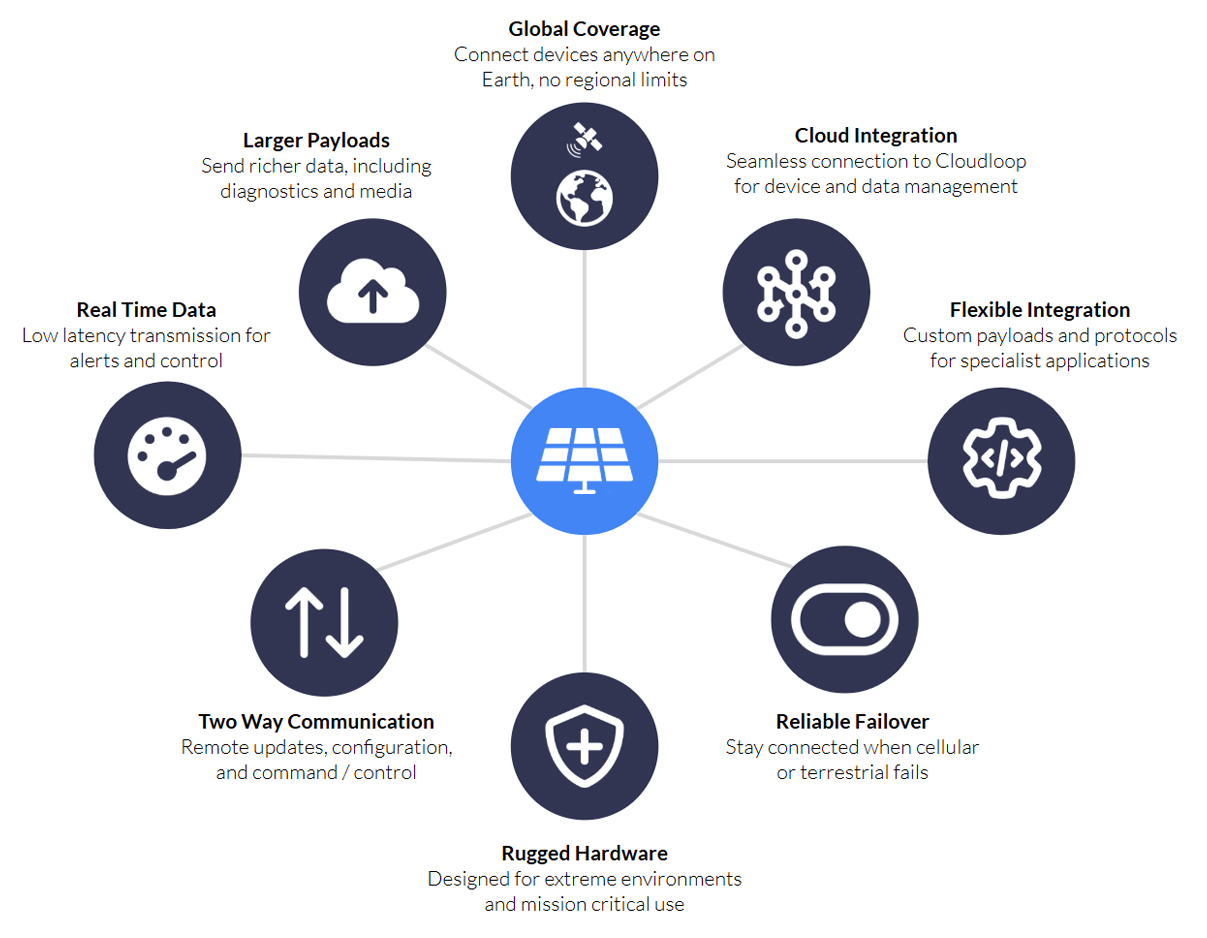Wind and solar farms are fast becoming the backbone of our green energy future. The first half of 2025 marked a defining moment for global power generation. According to Ember’s Global Electricity Mid-Year Insights Report, global electricity demand rose by around 2.6%, yet renewables grew even faster. Solar output jumped by 31% and wind by 7.7%, helping renewables overtake coal for the first time in history, supplying 34.3% of global electricity compared with coal’s 33.1%.
That growth isn’t slowing either. Ember’s latest report forecasts that global renewable capacity additions will reach almost 793 GW in 2025 (an 11% increase on 2024) driven by 21% growth in wind and 9% in solar. At this pace, the world is within reach of tripling global renewable capacity by 2030, a central COP28 goal.
Yet as the scale of renewable infrastructure expands, new challenges arise: managing millions of connected devices, capturing continuous data, and maintaining visibility across installations that often sit far beyond the reach of terrestrial networks.
It’s not just about generating clean power anymore. It’s about keeping every asset connected, visible, and performing at its best.

The Connectivity Challenge in Renewable Energy
On remote coastlines, in vast deserts, or far offshore, wind and solar farms are typically built where natural resources are strongest. These prime energy locations often sit well beyond the reach of cellular and fiber networks, creating a growing connectivity gap that directly affects operational efficiency.
Without reliable links between assets and control centers, operators face a series of compounding challenges. Performance and fault visibility is limited, fault alerts can take minutes or even hours to arrive, and manual inspections are often required where remote diagnostics should suffice. The result is higher maintenance costs, slower response times, and an incomplete picture of system performance.
For years, proprietary satellite IoT networks, such as Iridium and Viasat, have bridged this gap. These systems provide the ultra reliable, low latency connectivity essential for mission critical operations like SCADA backhaul, emergency shutdown commands, and safety alerts. Their reliability is proven, but it comes at a price. Proprietary networks rely on specialized terminals and dedicated airtime contracts, delivering access to radio spectrum that’s dedicated to critical connections; this can, however, make these cost prohibitive for large scale sensor deployments across thousands of wind turbines or solar panels.
As renewable capacity surges and asset counts multiply, this challenge is only intensifying. Between 2023 and 2025, renewable additions have grown by an average of 29% annually. To connect every turbine, inverter, and panel without escalating operational costs, operators now need a new model for connectivity, one that blends reliability with scalability, and cost efficiency with coverage.
The Next Wave: Standards-Based NTN NB-IoT
The introduction of standards-based Non-Terrestrial Networks (NTN) by 3GPP has the potential to revolutionize satellite connectivity for renewable energy. By extending Narrowband IoT (NB-IoT), a low power, low cost communication standard already widely deployed in terrestrial networks, into satellite networks, operators can achieve consistent, affordable connectivity across even the most remote wind, solar, or storage sites.
For renewable operators, this evolution opens a new era: from connecting a few critical assets to connecting everything.
Benefits of NTN NB-IoT for Renewable Energy Operators
Applications for Standards-Based NTN NB-IoT in the Renewable Sector
For renewables, NTN NB-IoT fits best where thousands of low power sensors send small, infrequent updates from remote wind, solar, or storage sites; when reliable reach matters more than real time control.
Wind Energy: Smarter, Predictive Operations
Blade and drivetrain monitoring: Detect anomalies in vibration, strain, or temperature early to enable predictive maintenance before faults escalate.
Structural health: Monitor the integrity of towers and foundations to prevent costly structural damage.
Environmental insight: Collect temperature, humidity, and wind condition data to support condition-based maintenance in remote or offshore installations.
Solar Energy: Panel-Level Performance at Scale
Efficiency tracking: Sensors measure real time output, temperature, and irradiance across thousands of panels.
Environmental optimization: Track dust, shading, and humidity to plan cleaning schedules and maximize efficiency.
Predictive maintenance: Use AI-driven analytics on live panel data to anticipate issues before they affect yield.

Substations and Energy Storage: Always On Visibility
Operational intelligence: Monitoring of non-critical systems such as HVAC, enclosures, and backup units.
Battery and inverter performance: Sensors measure temperature, usage, and degradation to inform maintenance planning.
Local environment tracking: Monitor heat, moisture, and vibration to prevent minor issues from becoming outages.
Where it fits:
NTN NB-IoT is ideal for high volume, low data, latency tolerant applications. It gives operators affordable, long life visibility at scale across their renewable infrastructure.
Proprietary Satellite IoT: Real-Time Insight Where It Matters
While NTN NB-IoT delivers scalable connectivity for thousands of sensors, proprietary satellite IoT systems provide the other half of the equation: real time, high reliability communication for mission critical operations. These networks offer ‘always on’ control, richer data throughput, and the assured latency required for safety and command functions.
Wind Energy: Instant Awareness in Dynamic Environments
Turbine control and fault response: Enable immediate shutdown or restart commands when thresholds are exceeded, ensuring equipment protection and safety in offshore or isolated farms.
Crew safety: Maintain two way communication and emergency alerts for personnel working in remote or hazardous environments.
Data rich diagnostics: Support higher bandwidth uploads of vibration or acoustic data for detailed drivetrain and gearbox analysis.
Solar and Storage: Real-Time Control and Reliability
Critical fault alerts: Provide sub-minute notifications for inverter trips, arc faults, or temperature spikes, with confirmed two way acknowledgments.
Grid dispatch and load balancing: Coordinate distributed storage and solar assets for rapid response to grid frequency or demand changes.
Remote updates and control: Push firmware and configuration changes securely to field devices.

Substations and Microgrids: Control-Plane Resilience
SCADA continuity: Maintain command and telemetry when terrestrial networks fail to ensure operational visibility.
Command assurance: Provide guaranteed message delivery with acknowledgments for critical operational controls.
Local environment tracking: Monitor heat, moisture, and vibration to prevent minor issues from becoming outages.
Where it fits:
Proprietary satellite IoT excels in real time, safety critical, or data rich applications where latency, reliability, and assured control are essential.
Working Together: The Hybrid Model for Connected Renewables
Across the renewable ecosystem, both satellite technologies have distinct but complementary roles. Together, they can create a resilient hybrid connectivity framework: NTN NB-IoT for scalable insight, and proprietary satellite for mission critical control. This combination ensures every renewable asset, from panel to turbine, stays connected and performs at its best.
*Example service information based on Viasat NB-NTN (Standards-based NTN NB-IoT) and Iridium IMT (Proprietary Satellite IoT)
Hybrid Connectivity Roadmap for Renewables Operators
As renewable energy networks expand, the goal isn’t to replace what works, it’s to build on proven reliability while scaling smarter, standards-based connectivity. Proprietary satellite IoT remains invaluable for mission critical operations and guaranteed uptime, but the arrival of standards-based NTN NB-IoT opens the door to a new class of affordable, low power devices that can extend data collection to every corner of a wind or solar site.
The most effective strategy is hybrid: utilize the robustness of proprietary satellite for control, command, and safety, while using NTN NB-IoT to scale data visibility across assets, sensors, and environmental systems. This staged approach allows operators to evolve without risk, modernizing their infrastructure, reducing costs, and enabling massive IoT integration at their own pace.
Stage 1: Proven Reliability (Today)
Focus on mission critical control and safety using proprietary satellite IoT for SCADA backhaul and alarms.
Stage 2: Scaling Visibility (2026–2027)
Introduce NTN NB-IoT sensors for turbine gearboxes, inverter performance, and solar panel strings. Hybrid solutions use satellite where cellular fails.
Stage 3: Massive IoT Integration (2027–2028)
Deploy thousands of NB-IoT sensors across all assets. Integrate data streams into unified cloud platforms such as Cloudloop for full fleet visibility.
Stage 4: Intelligent Operations (2028 Onwards)
Apply edge analytics and AI for predictive maintenance, automated scheduling, and output optimization. Proprietary satellite remains for safety; NB-IoT drives efficiency at scale.
Building Smarter, Greener, More Connected Energy Systems
As renewable energy capacity continues to expand, the focus is shifting from generation to ensuring every asset, from turbines and inverters to panels and storage systems, remains visible, connected, and performing efficiently. Connectivity is now the foundation that enables data driven operations, predictive maintenance, and long term resilience.
Standards-based satellite IoT is making that connected vision achievable. By combining the reliability of proprietary satellite networks for mission critical control with the scalability of NTN NB-IoT for widespread monitoring, operators can design hybrid systems that balance performance, coverage, and cost. This approach turns isolated assets into part of a cohesive, intelligent network, one capable of supporting the next phase of renewable energy growth.
The transition to hybrid connectivity isn’t just about technology; it’s about creating the operational flexibility to expand confidently. By integrating both proven and emerging IoT standards, renewable energy operators can maintain uptime where it matters most, scale visibility across every site, and continue to build an energy generation system that’s smarter, cleaner, and ready for the future.
Need help building hybrid connectivity?
With over two decades of experience connecting critical infrastructure in some of the world’s most remote environments, Ground Control helps organizations design reliable, scalable satellite and IoT networks.
From mission critical systems to large scale sensor deployments, our team can guide you in combining proprietary and standards-based solutions to keep every renewable asset online and visible.
